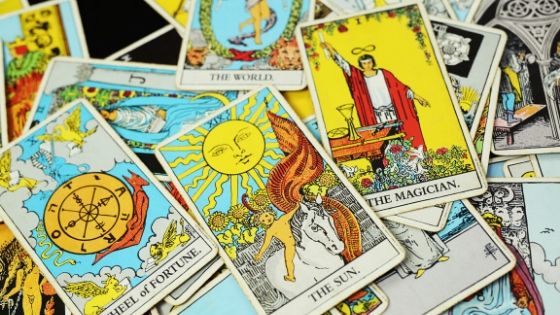Many believe that the discovery of the human mind’s “the internal tarot” was done by the renowned Swiss psychiatrist and psychoanalyst Carl Jung. With his notion of archetypes, his point of view of the tarot reading focuses on unveiling the unconscious, which is somewhat related to the recurring clues of mental alchemy.
Jung held a lengthy lecture in 1933 to express his insights about the tarot cards. He noted that the late ancient cards are actually the origin of the current times’ deck of cards, wherein the suits in black and red indicate the opposites, and the four suits (hearts, diamonds, spades, and clubs) represent individual symbolism.
He continued by describing the modern-day cards as psychological images that can be played by the player through the different combinations possible. He then said that this is also how the tarot cards reading works but with the added aspects of imagery or symbolic situations. He continued describing the various illustrations in the 22 Major Arcana cards, like the Tower, the Sun, the Hanged Man, the Empress, and others as some sort of archetypal concepts of unique nature.
Jung’s definition of the tarot cards could really be the basis of how the tarot card reading is practiced nowadays. Far from the stigma attached to it in the past, the tarot cards give us the opportunity to understand the way of life by tapping our intuition, the inner wisdom from our subconscious mind.
Even if you try checking the digital tarot card readings being offered today, like the OnlineTarotReadings, you will also be informed that through intuition and the card’s meaning and interpretation, you can achieve guidance and direction for better judgments towards the future.
The father of analytical psychology also talked about how humans have an innate need to use the unconscious mind in finding the meaning of the current situation. He sees divination through tarot cards as a way to make the process of individuation move forward. It means taking advantage of the playful combinations of archetypes to move towards completeness and integrity.
He also tried to explain tarot card reading by comparing it to other practices around the world, like the I Ching of China or Mexico’s divination calendar. All of these practices depict the union of the opposites or the rhythm of positive and negative, the need for loss and gain, and the necessity of dark and light.
Though the modern-day tarot cards enthusiasts try to get away with the notion that the tarot cards can make us see the future, Jung stated that we could predict the future with the cards’ guidance. He claimed that knowing how the present evolved from the past means the future is also linked to the current times.
If we listen more intently to what he said, we can confirm that his views are the same as the present-day purpose of the tarot cards. That is not to regard the future as something as solid as a stone, but a manifestation of our actions in the present that we can manipulate better with the help of the tarot cards’ interpretation using our subconscious wisdom.




















